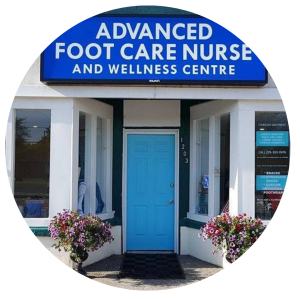Corn Care: Nurturing Feet for Optimal Health

- Janis Boudreau
Introduction:
Understanding Corns:
Corns are small, thickened areas of skin that commonly appear on the soles of your feet or between your toes. These firm, round or cone-shaped patches typically develop due to excessive pressure or friction on bony areas or on the soles of the feet. Corns can be categorized into two types: hard corns and soft corns.
Hard Corns:
Hard corns usually develop on the tops of your toes or on bony areas. These corns have a dense, hardened center and are surrounded by inflamed skin, causing discomfort and pain.
Soft Corns:
Soft corns, on the other hand, form between the toes, where moisture and friction occur. These corns are typically whitish and have a rubbery texture. If left untreated, soft corns can become susceptible to infections.
Prevention Techniques:
Prevention is key in caring for your feet and avoiding the development of corns. Here are some useful preventive measures:
-
1. Proper Footwear: Wearing well-fitting and comfortable shoes that provide adequate support is essential. Avoid tight shoes that compress your toes or rub against your feet, leading to friction and pressure points.
2. Regular Foot Hygiene: Practicing good foot hygiene helps prevent corns from forming. Regularly clean and dry your feet thoroughly, paying attention to the spaces between your toes to avoid the accumulation of moisture.
3. Cushioning and Protection: Utilize cushioned pads or insoles designed specifically to protect your feet from friction and excessive pressure. These products distribute force evenly, reducing the likelihood of corn formation.
- Soak and Exfoliate: Soak your feet in warm water to soften the skin and make exfoliation easier. Use a pumice stone or foot file gently to remove the dead, thickened skin. Be sure not to overdo it and cause further damage.
- Treatment and Management: Footcare nurses administer appropriate treatments for foot ailments, including wound care, debridement of calluses, toenail clipping and filing, and application of orthotic devices. They also assist patients in managing chronic foot conditions by providing education, advice on footwear, and self-care techniques.
- Moisturize: After exfoliating, moisturize your feet to keep them hydrated. This helps to prevent excessive dryness and the formation of hard skin.
- Protective Cushions: Utilize protective cushions or plasters to reduce friction and alleviate pressure on corns. These cushions are readily available in pharmacies and can provide temporary relief.
- Proper Footwear Selection: Opt for shoes with a wide toe box to accommodate your toes comfortably. Avoid high heels or shoes that put excessive pressure on the affected areas until the corns heal.
- Seek Professional Assistance: If your corns persist, become painful, or show signs of infection, it is advisable to consult a podiatrist. They can provide appropriate treatment options, such as corn removal or prescribing medications if necessary.

Janis Boudreau
Janis Boudreau is the founder of Advanced Foot Care Nurse, the leading foot care specialised business in Ontario with over 6 locations and growing. Professional, High-Quality Foot Care done with compassion!
We have 12 licensed Nurses and 1 PSW/Aesthetician in good standing with the College of Nurses of Ontario.
We are educated in Advanced Foot Care, and skilled Diabetic education. We upgrade our skills continually to meet best practice standards.
We proudly have combined 105 years of nursing experience and over 15,000 high quality foot care visits in office and home foot care.
ADVANCED FOOT CARE NURSE cares about you and offers a holistic approach to foot care!
With the use of a state-of-the art, suction integrated podiatry drill and various podiatry burs, We have found a unique way to deliver the safest, effective and painless experience for patients with virtually no vibration… We only use the best!


